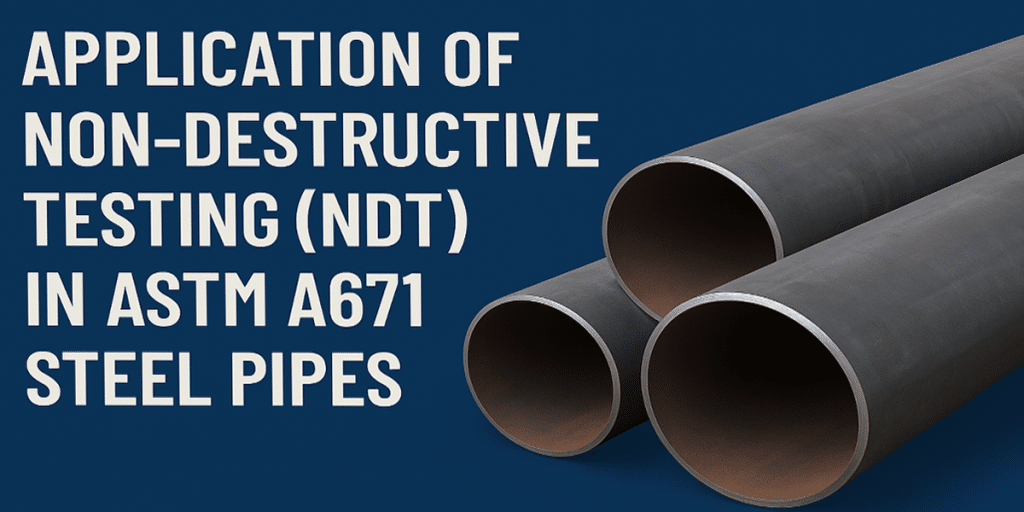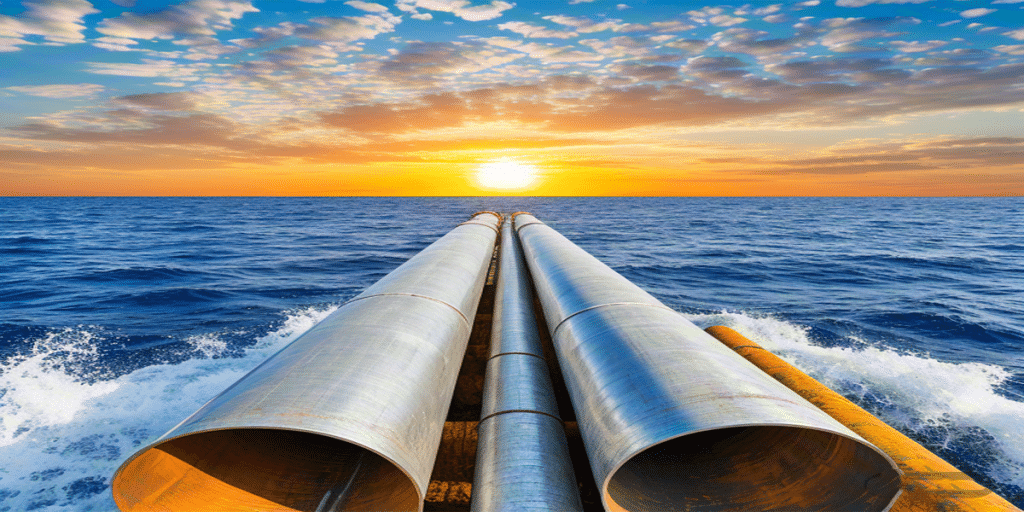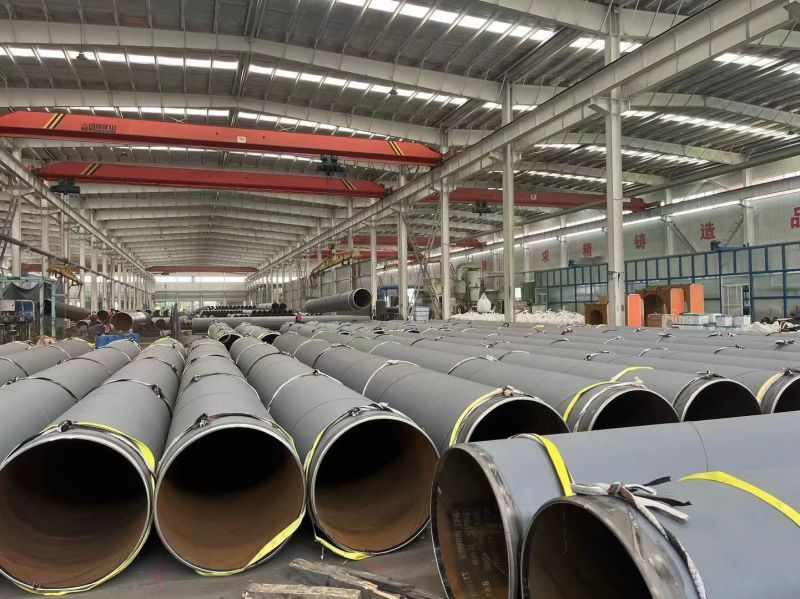- 1. What Are ASTM A53 and ASTM A106?
- 2. Key Differences
- 3. Key Data Comparison Table (For Procurement Decision-Making)
- 4. Material Selection Recommendations (How to Choose for Your Project)
- 5. Quality Control and Inspection Key Points (Procurement Checklist)
- 6. Why Choose LONGMA?
- 7. References and Authoritative Sources (Excerpts)
If your project requires seamless pipes for high-temperature, high-pressure, or critical service conditions (e.g., power plants, refineries, chemical high-temperature steam pipelines), ASTM A106 (Seamless) is the first choice. For general water supply and drainage, low/medium-temperature applications, structural uses, or cost-sensitive projects—where welded pipes are acceptable—ASTM A53 (Seamless or Welded) offers better cost-effectiveness.
What Are ASTM A53 and ASTM A106?
- ASTM A53
ASTM A53 covers seamless and welded (including Electric Resistance Welded/Continuous Furnace Welded) carbon steel pipes. It is suitable for mechanical applications, pressure systems, and general steam/water/gas/air pipelines, with a typical size range from NPS 1/8 to NPS 26.
- ASTM A106 (Quick Definition)
ASTM A106 covers seamless carbon steel pipes specifically designed for high-temperature service in boilers and pressure systems. It is typically used in more demanding thermal operating conditions, and seamless manufacturing is mandatory for ASTM A106.
Key Differences
- Welded Pipes Permitted?
- ASTM A53: Can be either welded or seamless.
- ASTM A106: Generally limited to seamless pipes only.
- Applicable Operating Conditions
- ASTM A106: Designed for long-term service under high-temperature/high-pressure conditions.
- ASTM A53: Suited for general mechanical/structural uses and fluid transfer under low/medium-temperature conditions.
- Size and Tolerances
- The two standards overlap in common nominal diameters, but ASTM A106 imposes stricter requirements on manufacturing, tolerances, and equivalent testing—critical for its high-temperature service role.
Key Data Comparison Table (For Procurement Decision-Making)
| Item | ASTM A53 | ASTM A106 |
| Permitted Manufacturing Methods | Seamless / ERW / Continuous-weld (Type S/E/F) | Seamless (only) |
| Typical Applications | Water supply & drainage, low/medium-temperature steam, structural pipes, general mechanical uses. | High-temperature/high-pressure fluid systems, boilers, oil refining, power plants. |
| Mechanical Properties (Examples) | Grade A: Yield Strength ≥30 ksi / Tensile Strength ≥48 ksi; Grade B: Yield Strength ≥35 ksi / Tensile Strength ≥60 ksi. | Grade A/B/C: Grade A: 30 ksi (Yield) / 48 ksi (Tensile); Grade B: 35 ksi (Yield) / 60 ksi (Tensile); Grade C: 40 ksi (Yield) / 70 ksi (Tensile) (varies by grade). |
| Heat Treatment & Tolerances | Common processes: hot-rolled or cold-drawn; some types have specific ductility requirements. | Clear recommendations for hot working, inspection, and dimensional control tailored to high-temperature service. |
| Common Inspections | Hydrostatic test, tensile test, chemical composition analysis, NDE for ERW welds (per specification). | Strict hydrostatic testing (based on SMYS percentage), chemical/mechanical testing—suitable for long-term on-site high-temperature service. |
Note: This table summarizes key comparisons. For details on specific sections (tolerances, elongation rates, chemical limits), refer to the official ASTM standard documents or published guidelines.
Material Selection Recommendations (How to Choose for Your Project)
- Prioritize Operating Conditions
If your design involves high temperature/pressure, long-term high-temperature operation, or key systems in refining/power generation, prioritize ASTM A106 (Seamless). This avoids weld fatigue/corrosion issues and ensures higher reliability. - Cost and Delivery
ASTM A53 (especially ERW pipes) generally has lower costs and faster delivery times, making it ideal for large-diameter, structural, or general water supply/drainage projects. - Manufacturing Process Constraints
If downstream processes (e.g., pipe bending, flange installation) require specific material ductility, clearly specify the Type (E/F/S)and Grade in your purchase order. - Third-Party Requirements
If engineering codes or clients specifically mandate ASTM A106 or seamless pipes (e.g., petrochemical projects), strictly procure in accordance with the standard and arrange third-party inspection.
Quality Control and Inspection Key Points (Procurement Checklist)
- Chemical Composition and Mechanical Test Reports (MTC)
Verify the Grade, chemical limits, and tensile/yield strength data. - Hydrostatic Test
Both ASTM A106 and ASTM A53 require hydrostatic testing. Typically, the test pressure should generate a stress equal to 60% of the Specified Minimum Yield Strength (SMYS), with a holding time of at least 5 seconds. - Weld Non-Destructive Examination (NDE)
For ERW pipes with NPS ≥2, electrical testing or other NDE methods for welds are often required (per purchaser/supplementary requirements). - Third-Party/On-Site Sampling Inspection
For critical projects (high-temperature/high-pressure), it is recommended to commission a third party to conduct chemical analysis, tensile testing, ultrasonic/radiographic testing, and dimensional sampling.
Why Choose LONGMA?
As a manufacturer with over 20 years of pipe manufacturing experience, LONGMA specializes in ERW and LSAW round pipe production, providing integrated solutions for engineering projects:
- In-House ERW/LSAW Production Lines
Capable of mass-producing pipes per standards like ASTM A53/A106 and accepting custom orders. - Strict Quality Management and Factory Inspection
Conducts chemical composition analysis, mechanical property testing, hydrostatic testing, and weld NDE; supports third-party inspection and MTC issuance. - Rich Experience in Engineering Supply
Proven track record in pipeline, structural, and industrial facility projects, with significant advantages in delivery time and cost control. - Technical Support for Sampling and Material Selection
Provides samples, material certificates, and technical selection assistance; pre-sales engineers help with rapid material selection and quotation.
Need samples, technical consultation, or an immediate quote? Contact us or fill out the inquiry form on our website—we will provide actionable technical and commercial solutions in the shortest possible time.
References and Authoritative Sources (Excerpts)
- Brief Introduction to ASTM A53 / ASME SA53 Standards
- Specification and Application of ASTM A106 (Seamless Carbon Steel Pipe)
- Industry Interpretation: ASTM A106 vs. ASTM A53
- Detailed Mechanical Properties of ASTM A53 (Grade A/B)
- Mechanical Properties and Inspection Requirements of ASTM A106 (Grade A/B/C, Hydrostatic Testing)





